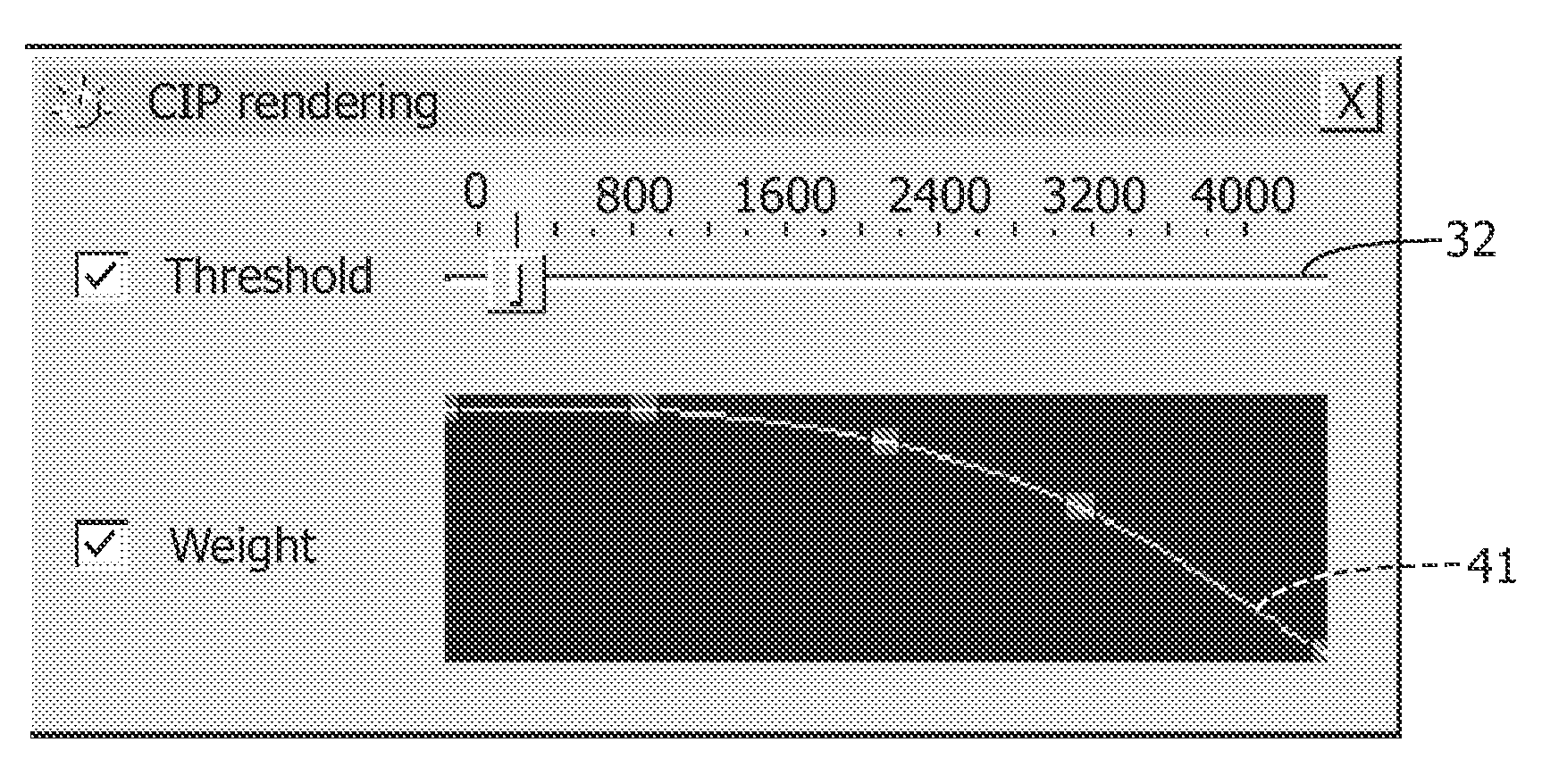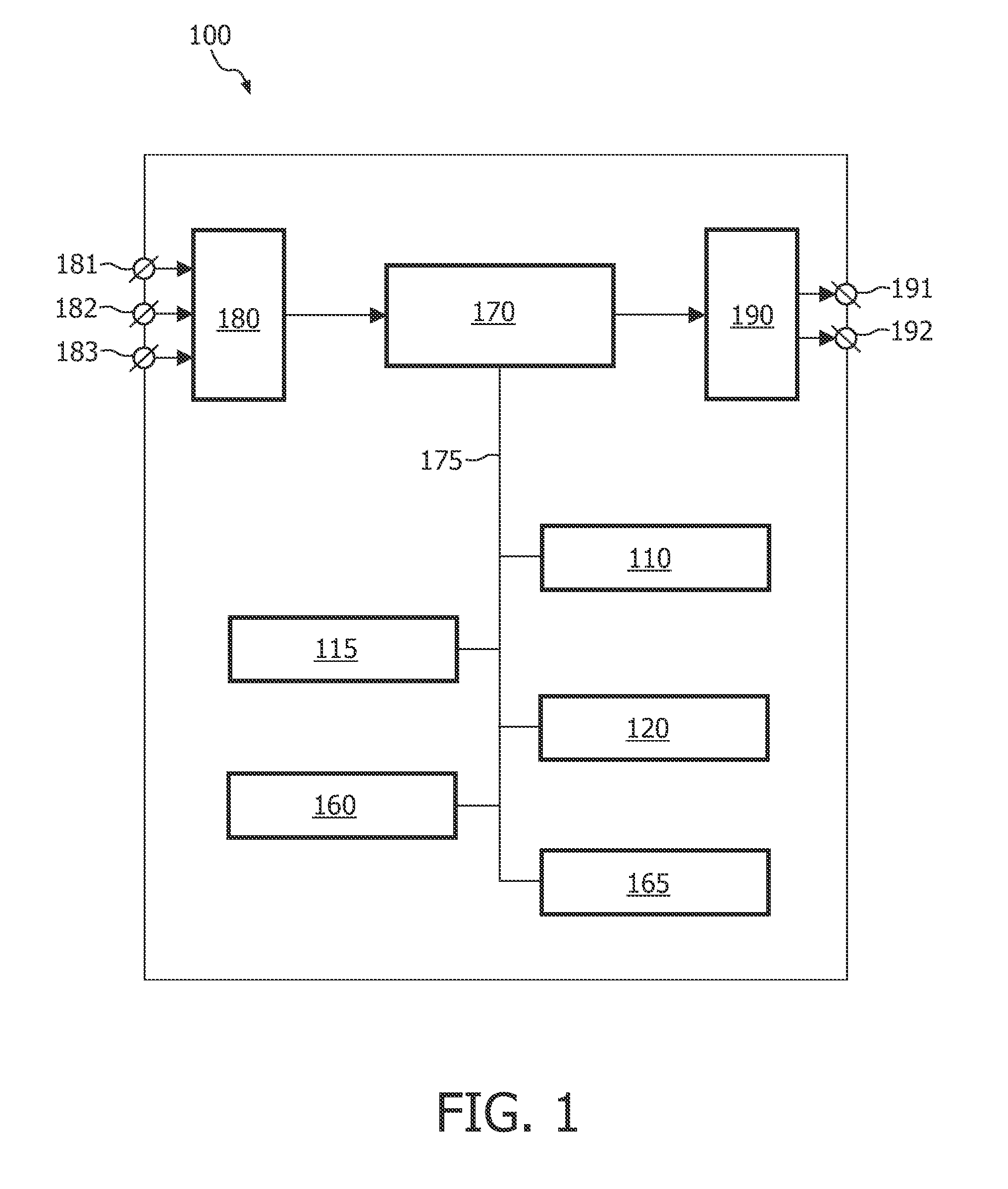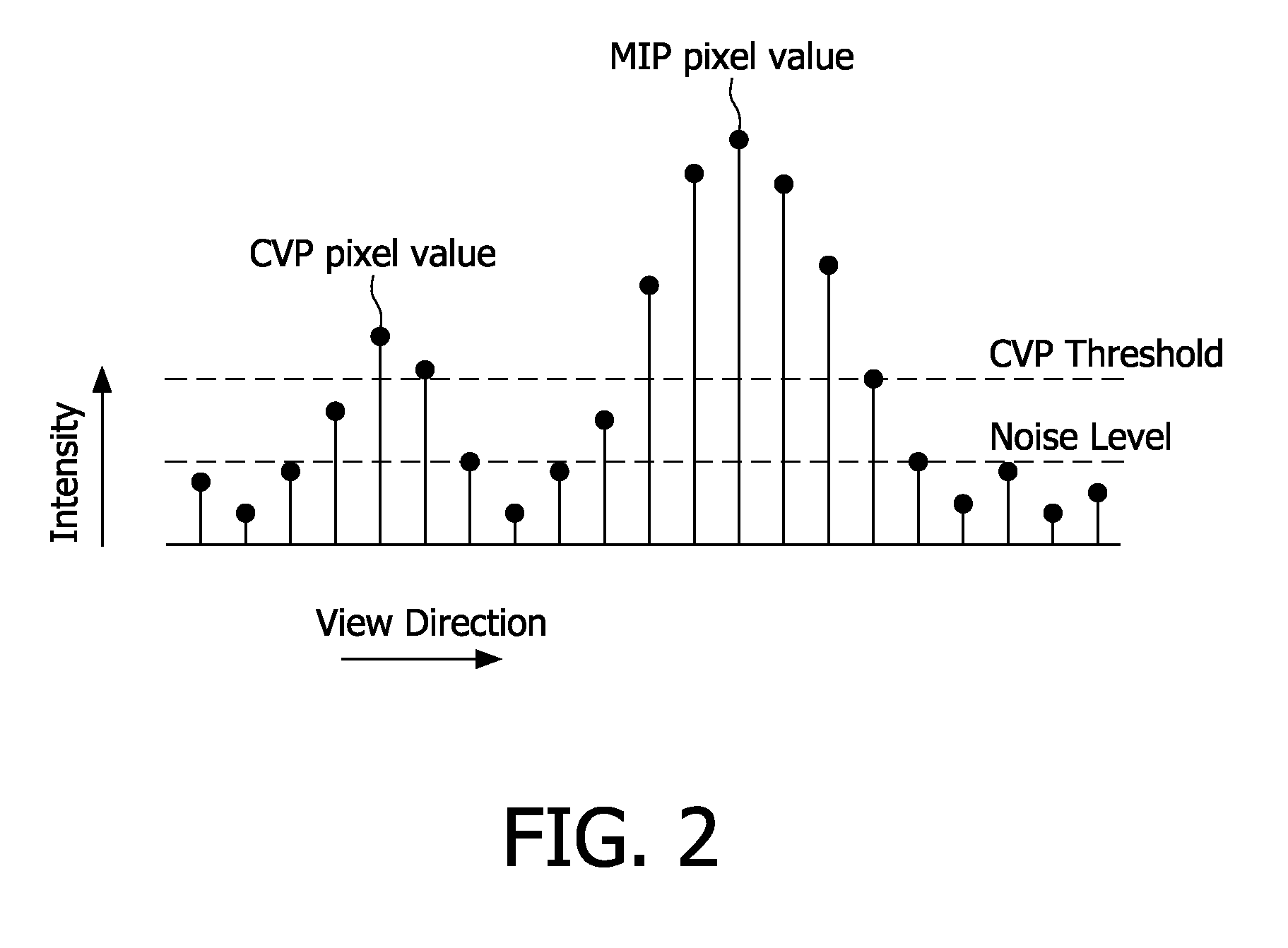Combined intensity projection
a projection and intensity technology, applied in the field of medical image data visualization, can solve the problem that the information contained in these images does not take into account the location of pixels along the cast ray lin
- Summary
- Abstract
- Description
- Claims
- Application Information
AI Technical Summary
Benefits of technology
Problems solved by technology
Method used
Image
Examples
Embodiment Construction
[0033]FIG. 1 schematically shows a block diagram of an exemplary embodiment of the system 100 for rendering an image based on a volumetric image data set, the system comprising:
[0034]a computation unit 110 for computing an initial pixel intensity of a pixel of the image defined by a corresponding voxel intensity of a corresponding voxel comprised in the volumetric image data set; and
[0035]an adjustment unit 120 for computing a final pixel intensity of the pixel, based on the initial pixel intensity and on a location of the corresponding voxel.
[0036]The exemplary embodiment of the system 100 further comprises the following optional units:
[0037]a weight unit 115 for computing a pixel weight based on the location of the corresponding voxel, the final pixel intensity being a product of the pixel intensity and the pixel weight;
[0038]a control unit 160 for controlling the workflow in the system 100;
[0039]a user interface 165 for communicating with a user of the system 100; and
[0040]a memo...
PUM
 Login to View More
Login to View More Abstract
Description
Claims
Application Information
 Login to View More
Login to View More - R&D
- Intellectual Property
- Life Sciences
- Materials
- Tech Scout
- Unparalleled Data Quality
- Higher Quality Content
- 60% Fewer Hallucinations
Browse by: Latest US Patents, China's latest patents, Technical Efficacy Thesaurus, Application Domain, Technology Topic, Popular Technical Reports.
© 2025 PatSnap. All rights reserved.Legal|Privacy policy|Modern Slavery Act Transparency Statement|Sitemap|About US| Contact US: help@patsnap.com



